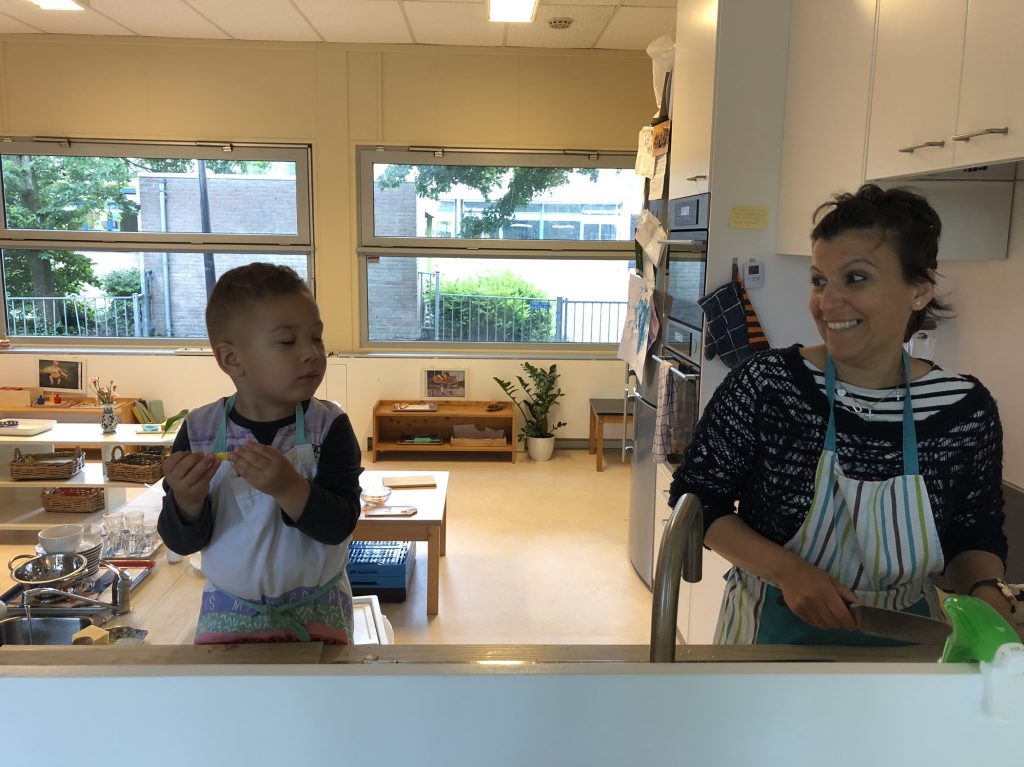
At Casa, one of our pillars is Nutrition and Food Preparation.
With the older children, this is easy to accomplish as they have the motor control they need to accomplish all the tasks given them.
But with the Toddlers, our youngest group of ages 1-3, who are still developing their bodies and motor control...
What are they capable of?
At this age, children prepare food because they want to do it (they see their parents doing it at home and are eager to copy and help), but unlike in the Lower Elementary (ages 6-9), they are not driven by the fact that they are preparing it for everyone else.
Toddlers are focused on meeting their needs here and now; they are primarily interested in themselves. This is where the role of the adult is very important in making them aware of the social aspect of food preparation.
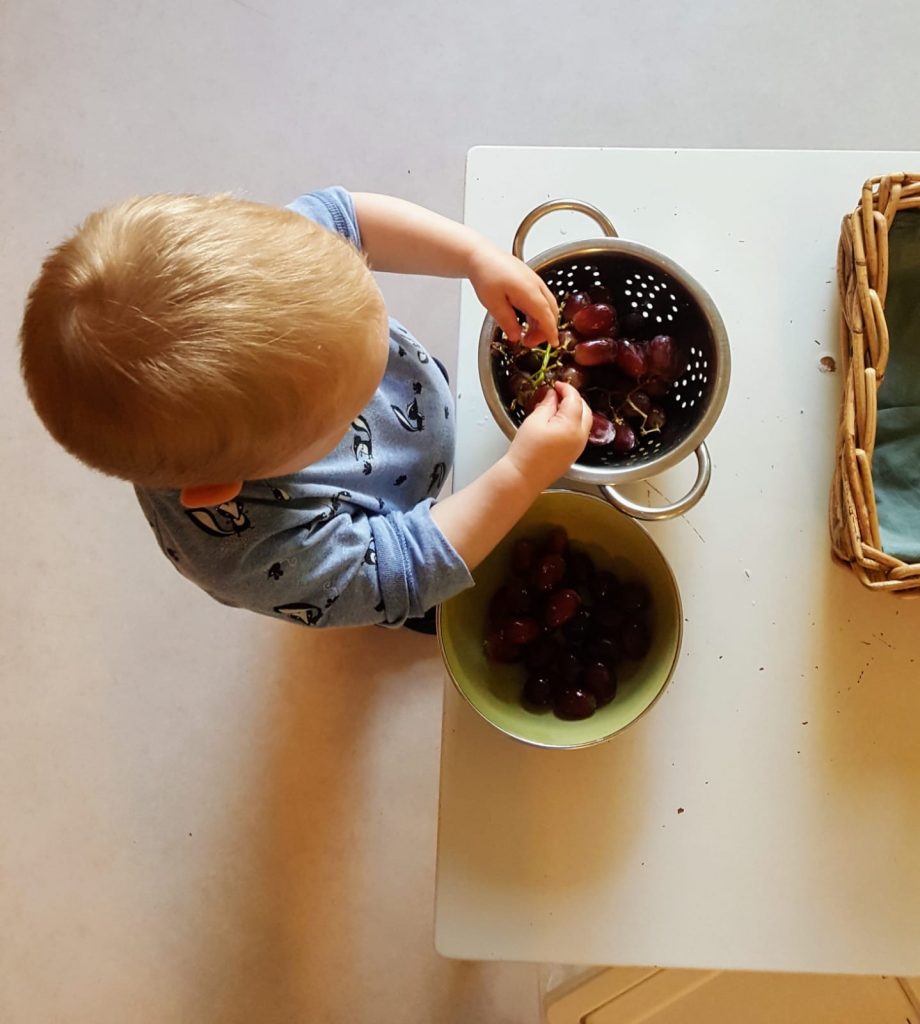
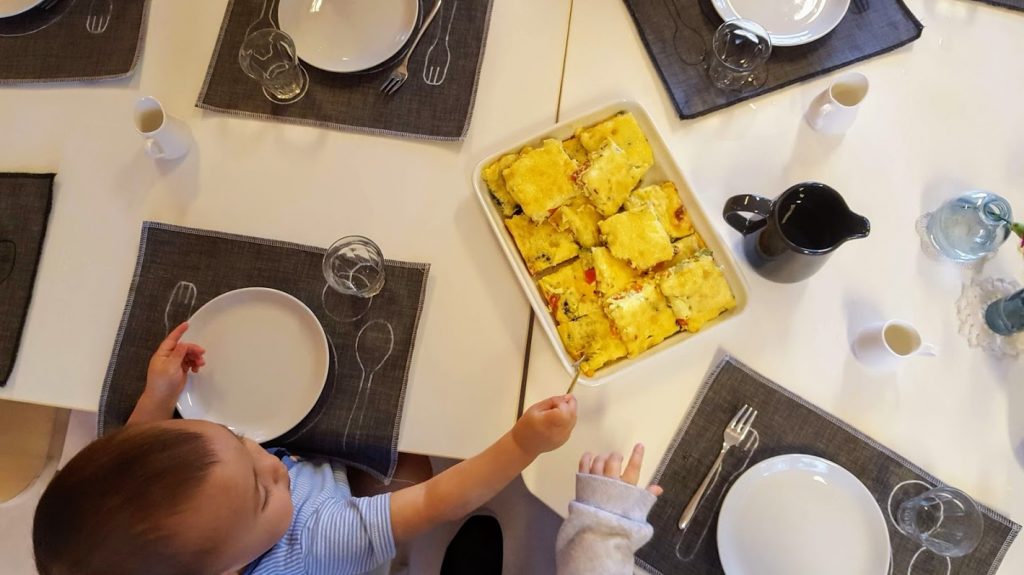
By telling them: “Oh, I see you finished cutting the banana, thank you! Let’s put it on the table so that we can all eat it at the snack” we make them aware of their classmates.
And of course during the snack, when all children are at the table eating, by telling them “Today X cut the bananas for us. That was very kind of you, X. Thank you!” we acknowledge their work.
This gives the child a sense of accomplishment and trust in his or her own abilities, while at the same time making all the other children aware of the work their classmate did. Most of the time they will add that it’s delicious (or that they don’t like it!) and also thank their classmate by either using words or hugs.
To encourage the independence of the children, especially for this age, it is important to set them up for success.
We do this by paying close attention to something very important in Montessori: the PREPARED environment.
When preparing food we need good quality, real utensils for the children to use. The ones we provide depend on the type of food that will be prepared.
We:
- Use utensils that are small with short handles (to fit their hands)
- Use spreading knives that are blunt (to avoid accidents)
- Have small chopping boards made out of natural materials
- Have everything ready before we start preparing food, before we invite the children to do so (to maintain order, give clarity in sequence and give clear points of reference)
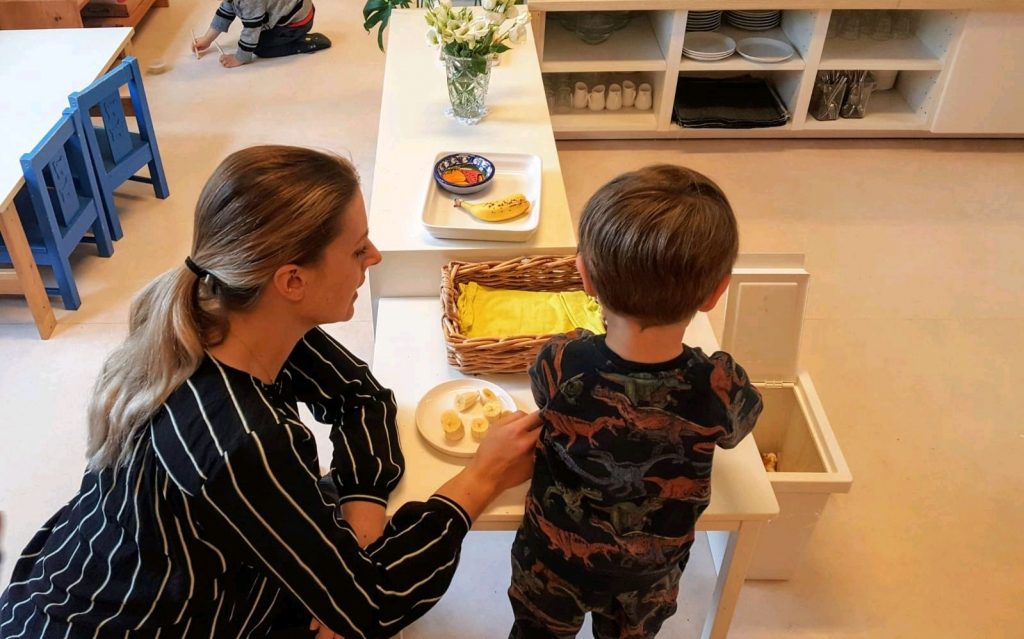


Before the children do any activity by themselves, the guide will give them a presentation - in order to show them what is expected of this activity.
In this presentation a lot of language will be used (all the objects will be named - banana, bowl/ plate, cutting board, knife, scraps bin etc.) and (unlike the Children’s House presentations) the child will be involved as soon as possible in order to keep them engaged and interested.
At this age, they do not have the patience to watch the adult doing the activity, they want to be the ones doing it (here and now) and it’s important to be aware of this. Also, by involving the children (the adult peels a bit of the banana peel and then invites the child to do it, then cuts a piece then invites the child to do it), they will learn patience and collaboration.
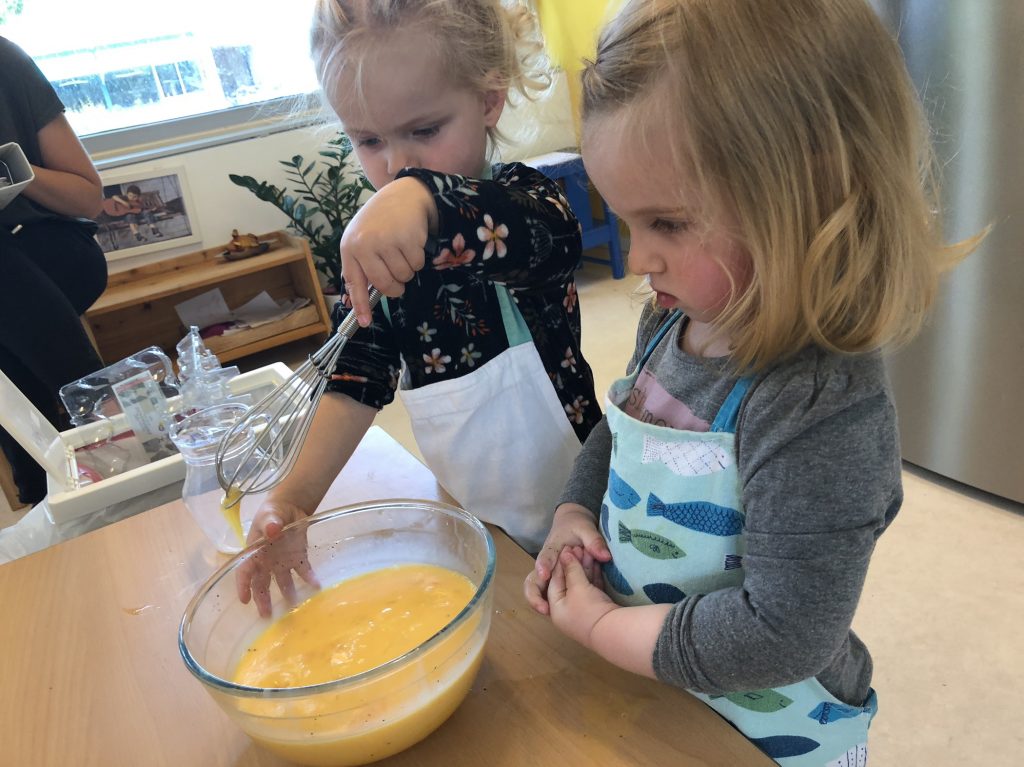
In the morning:
Only a few different foods are presented at any one time on the shelf (in order not to overwhelm the children with too many choices). We do our best to use a wide variety of fruit and vegetables so that children can taste each and every one of them and get as much information and sensorial knowledge about the world and the food we eat.
All the actions related to food contribute to many of the senses (smell, taste, touch, sound - all can have a favorable effect on the digestive system).
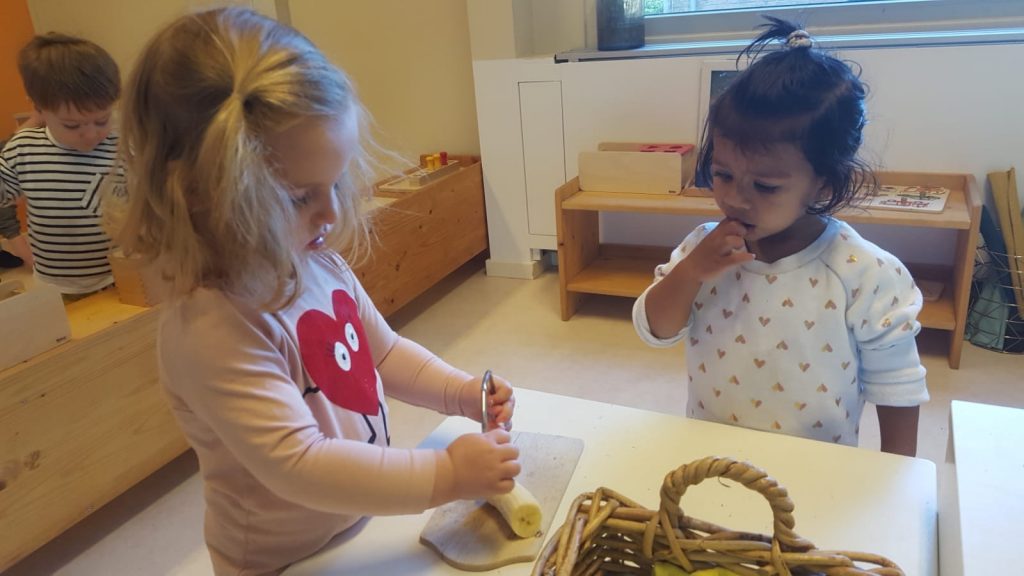
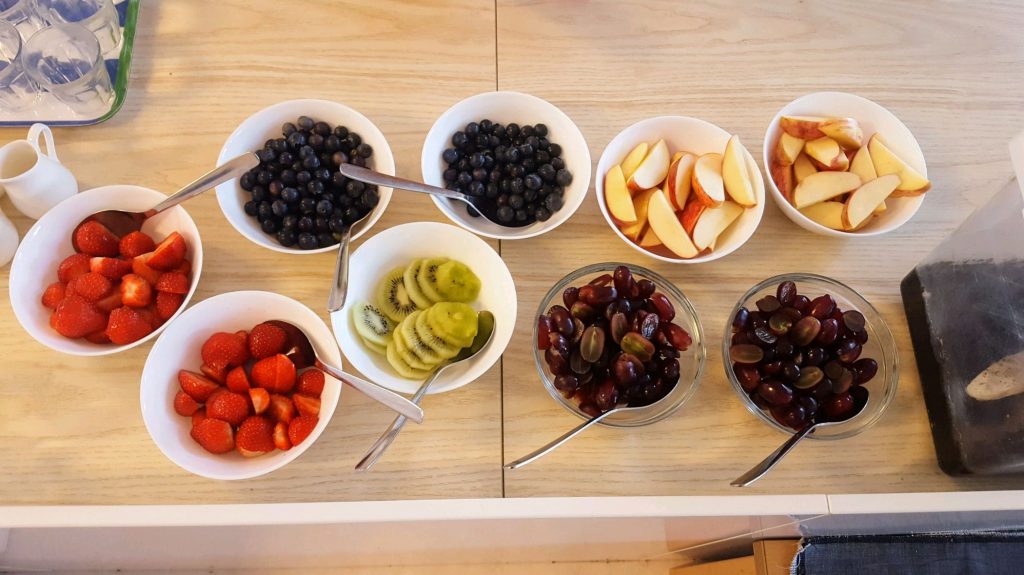
There is a lot of thought put in all these activities to the smallest details such as: when using a slicer, we hold it parallel to our body and turn the cutting board perpendicular to our body because the child will never cut it properly if it’s horizontal (lowering the chances of success).
Or that, before inviting the child, we make a cut at the top of the banana in order to make it easier for them to peel it without squishing it in their hands.
We first analyse and practice all of the movements we make during a presentation to make it smooth, orderly and clear for the child.
One of the first things that a child in our Toddler group will do is cut a banana for the morning snack. For this activity, there will be a tray or basket on the shelf with the tools the children need.
These tools include:
- Chopping board
- Banana cutter (foie gras slicer)
- Plate for the cut bananas
- And there is always a bin next to the table to throw away the peel.
Also on the food preparation shelf are:
- A plate or holder of some kind with ½ bananas
- A wet, squeezed sponge and a mitten on a tray for cleaning up
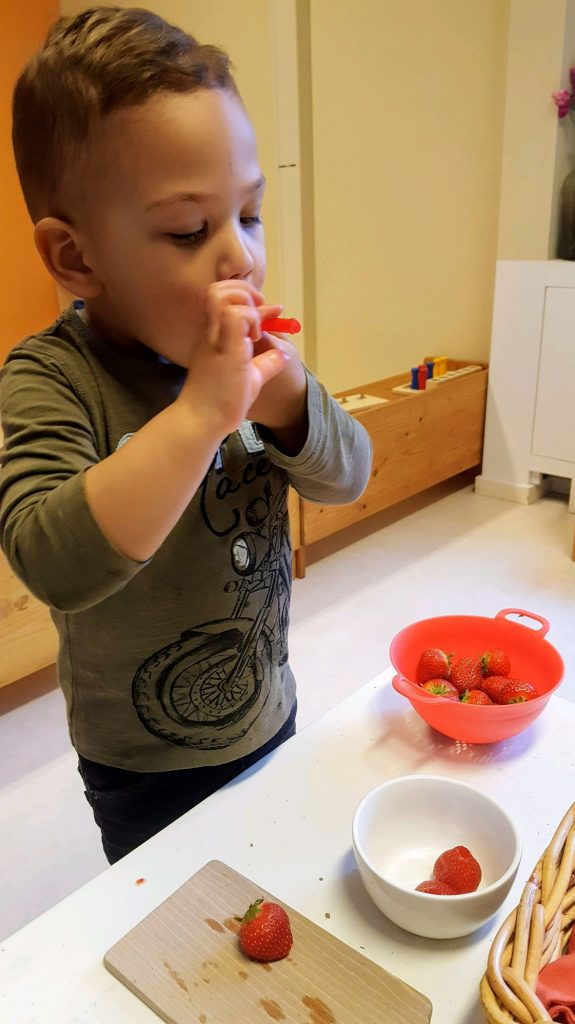
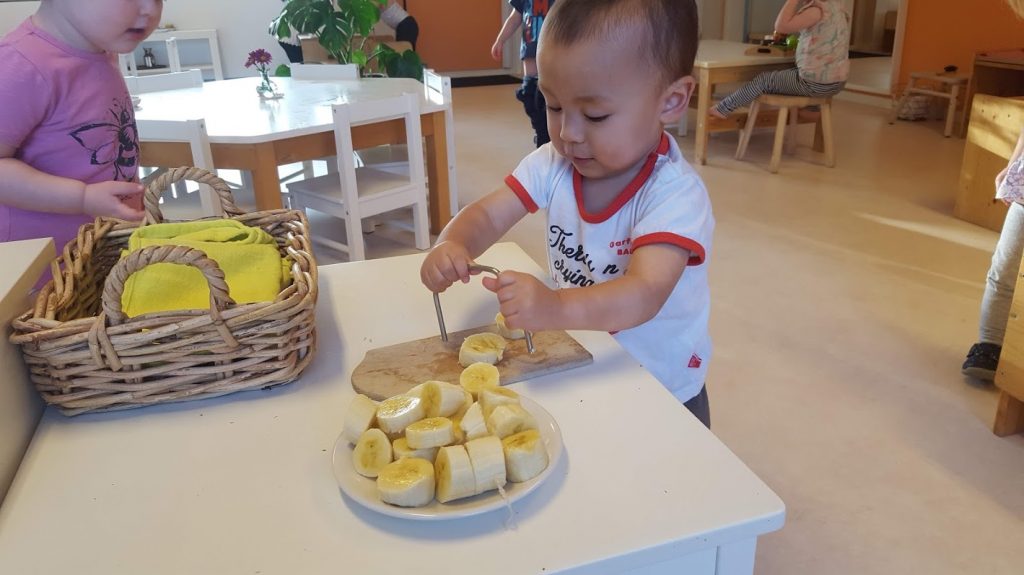
Other food activities that might be available are:
- Plucking grapes
- Spreading sandwiches (we can use either bread or crackers - which we can spread with a variety of things: peanut butter, vegetarian sausage, jam, spreadable cheese etc.; of course sometimes they will end up eating either the spread or bread while saying that they are just tasting it)
- Peeling and slicing an egg
- Preparing strawberries
- Making orange juice (squeezing halves of mandarins, which are smaller and easier to grip for the children)
- Squeezing lemons (for lemonade; halves of limes are smaller and easier to grip - we roll them on the table before use to make the pulp detach a bit)
- Peeling mandarins
- Preparing banana bread
- Baking bread
Each of these tasks will have its own “material” that they will use to complete it. When they are finished, they will be guided to wash up their materials and return them to the cupboard for the next child.
Lunch time:
Sadly, it’s not always possible for children to prepare a regular meal. Thankfully, snack moments still give possibilities for preparation, for setting a beautiful table and for eating with good manners and cleaning up.
However, any participation is encouraged with the preparations for lunch, even if it's just watching what the others are doing!
When it's time to begin, the guide or volunteer chef will invite the children who wish to help to put on their aprons and wash their hands.
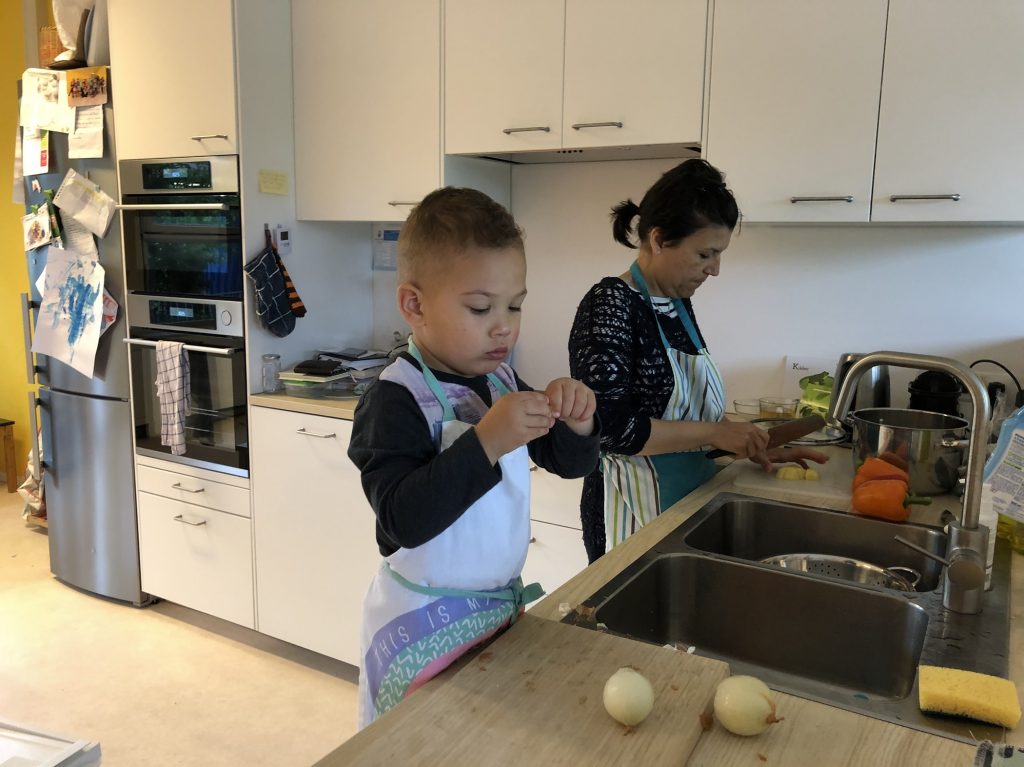
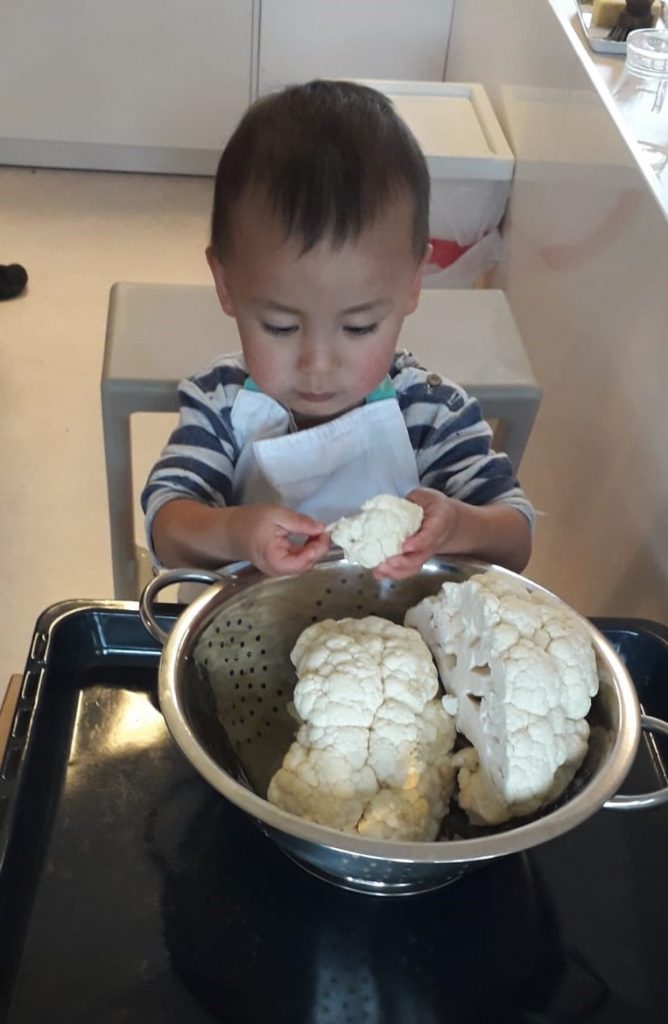
We invite 2 or 3 children to help setting the table for lunch and afterwards all of them are invited to clean up once they are finished. However, at this time the children are often quite tired, so we are happy to assist them with the clean up.
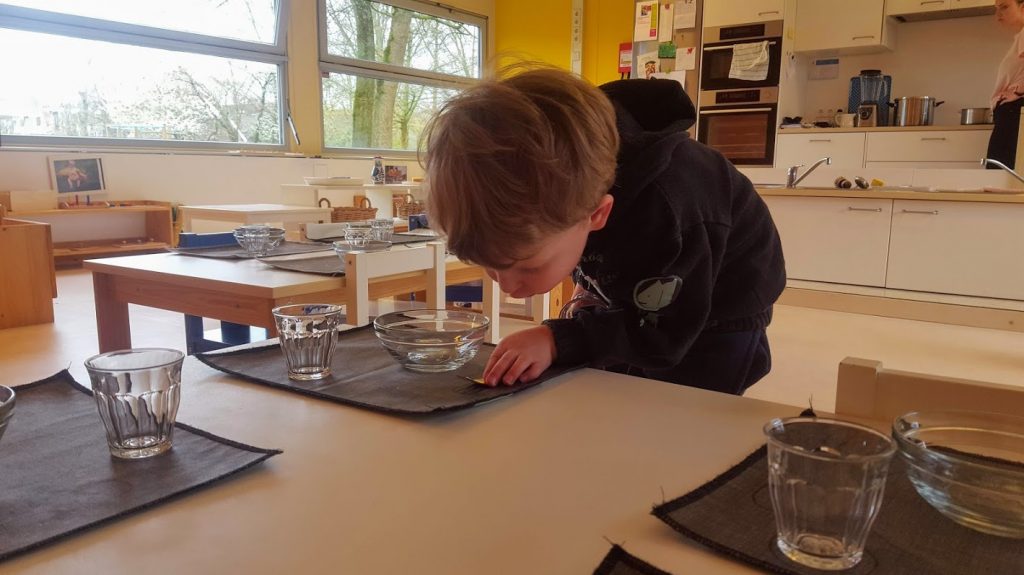
As most preparations for lunches are still too challenging for children this age, they are given tasks that are within their ability.
These tasks include:
- Washing all the vegetables,
- Separating broccoli and cauliflower into smaller pieces,
- Mashing potatoes,
- Stirring the food in the pot (under very close supervision),
- Taste testing (and tasting ingredients - this they love to do),
- And helping put dirty dishes in the dishwasher.
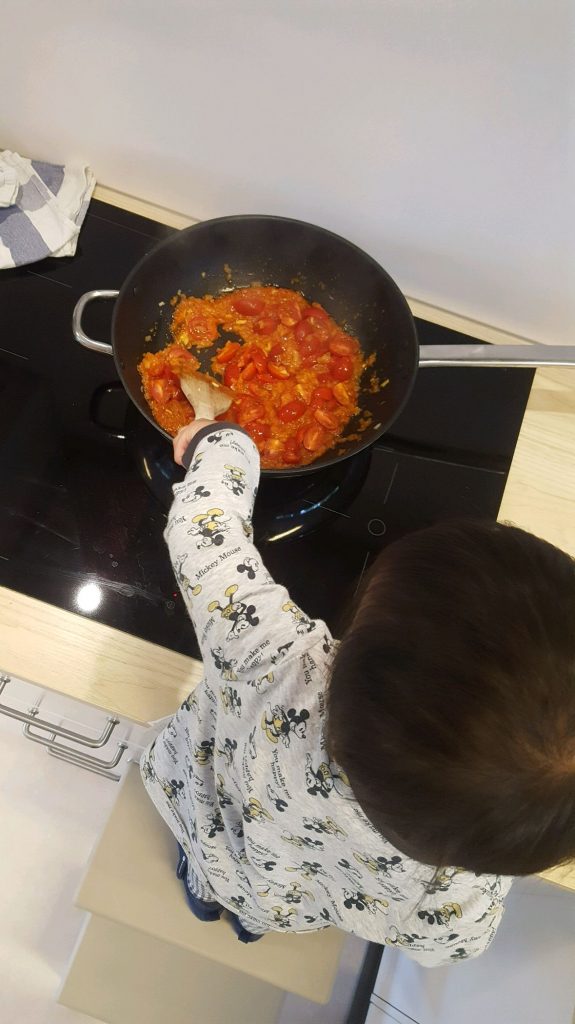
In the afternoon:
After their naps, children are invited to assist with emptying the dishwasher, and preparing the afternoon snack.
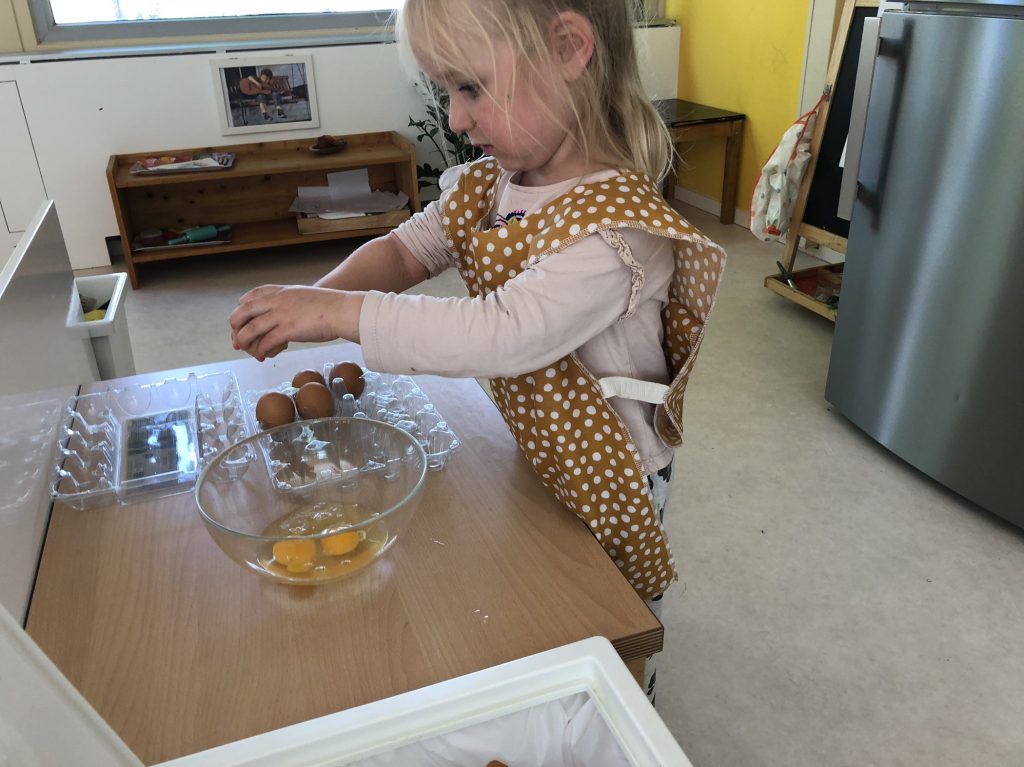
Children learn to make them on their own! (with assistance from the adults on the more tricky parts such as flipping it in the pan)!
The steps include:
- Assessing what is needed and preparing the materials and ingredients (bowl, whisk, eggs of course, salt, pepper, milk, cheese, butter, veggies)
- Breaking the eggs
- Filling the bowl with enough eggs to feed all the children
- Whipping the eggs together
- Adding milk
- Adding salt
- Adding other vegetables that are given to them.
Once they are finished, they give their guide the egg mixture to cook.
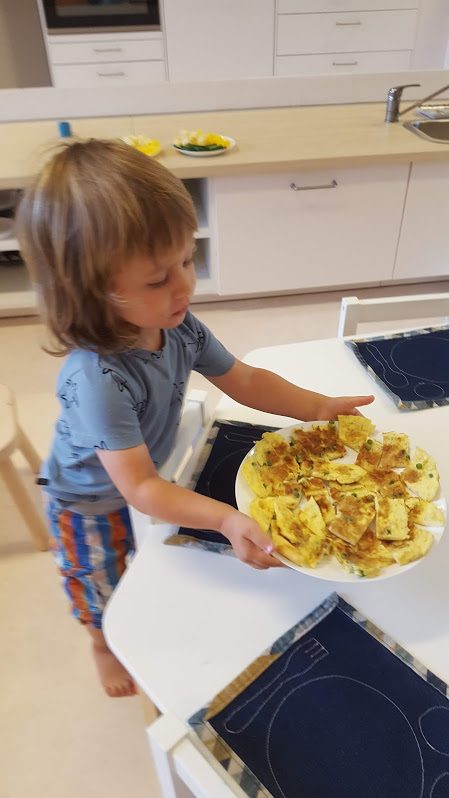
The afternoon snack can be comprised of many different things, but generally it includes a lot of vegetables (tomatoes, cucumbers, peppers, olives, carrots), cheese (feta, little blocks of young cheese, mozzarella, spread cheese on crackers), omelette (either simple or with basil, kale, tomatoes, cheese etc.), smoothies.
The most popular to help make, however, is an omelet.
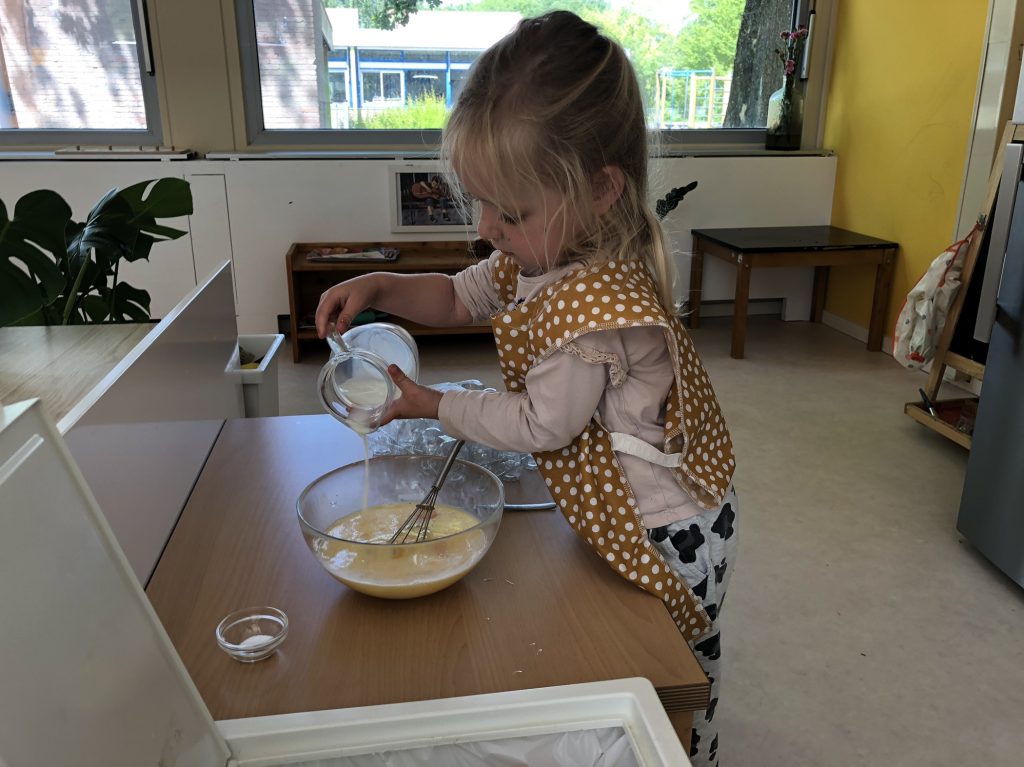


In the end:
Having the children involved in food preparation, especially at this age, gives them the opportunity to acquire practical skills (such as peeling a banana or eggs, spreading sandwiches etc.), it enriches their language, but most of all it helps them aid their growth towards independence (which is truly the end goal we have at the toddlers - functional independent children). It also gives them a chance to become more interested in food and educate their taste buds.
This means they become more open to eating the food they prepared or helped prepare and more willing to TRY foods that are different.
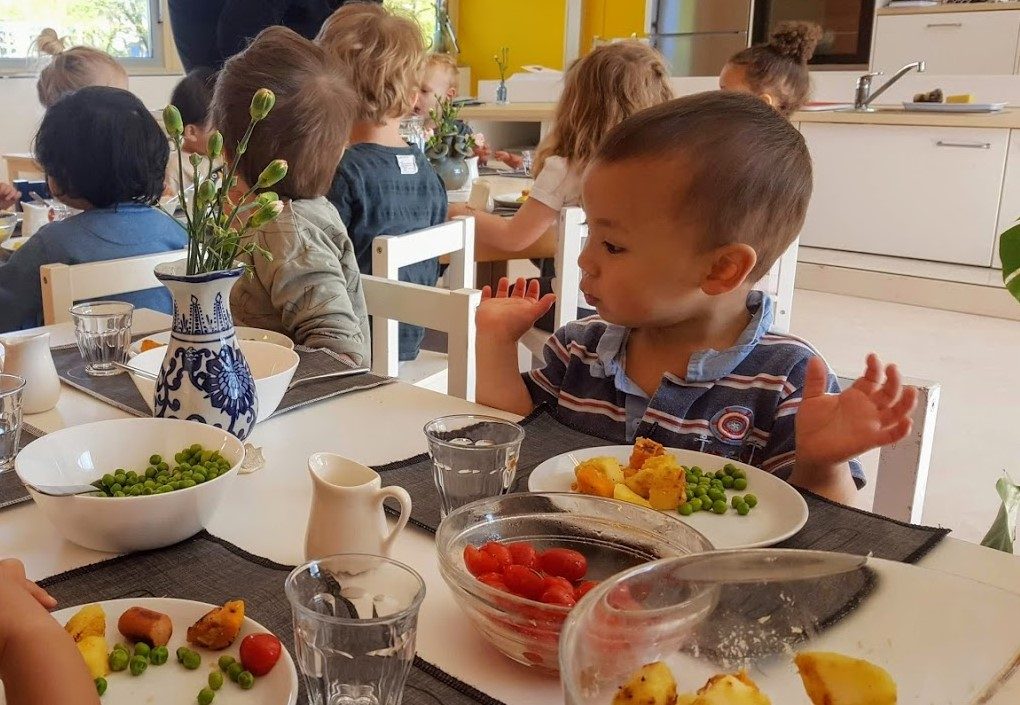
We all know about ‘picky’ toddlers, but here even our pickiest children will try each of the different things they are given! This is not only due to helping prepare the food, but also the modeling of the adults. Everyone tries a bite.
Whether they eat more than a bite, however, is still a work in progress. But at least they tried it!